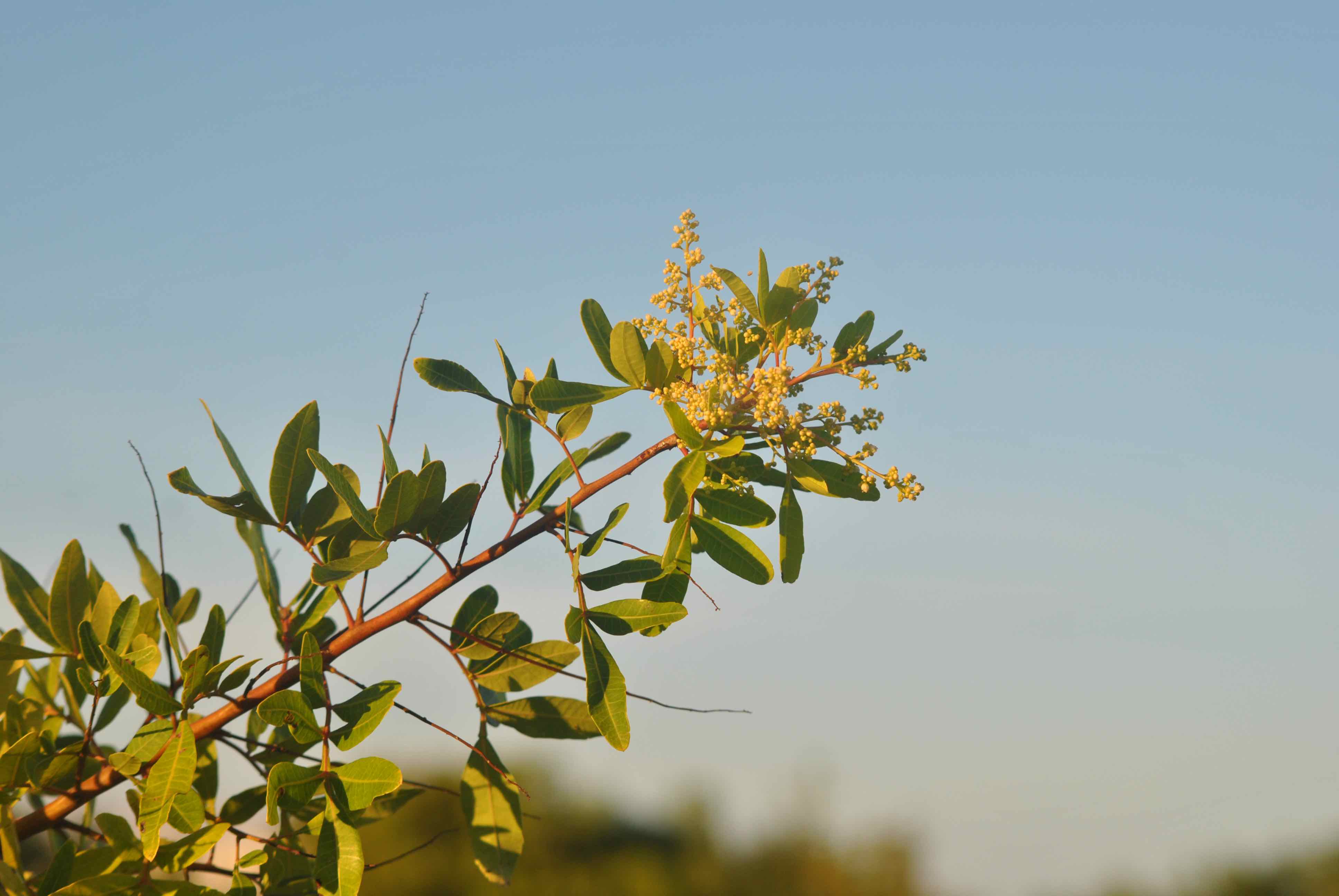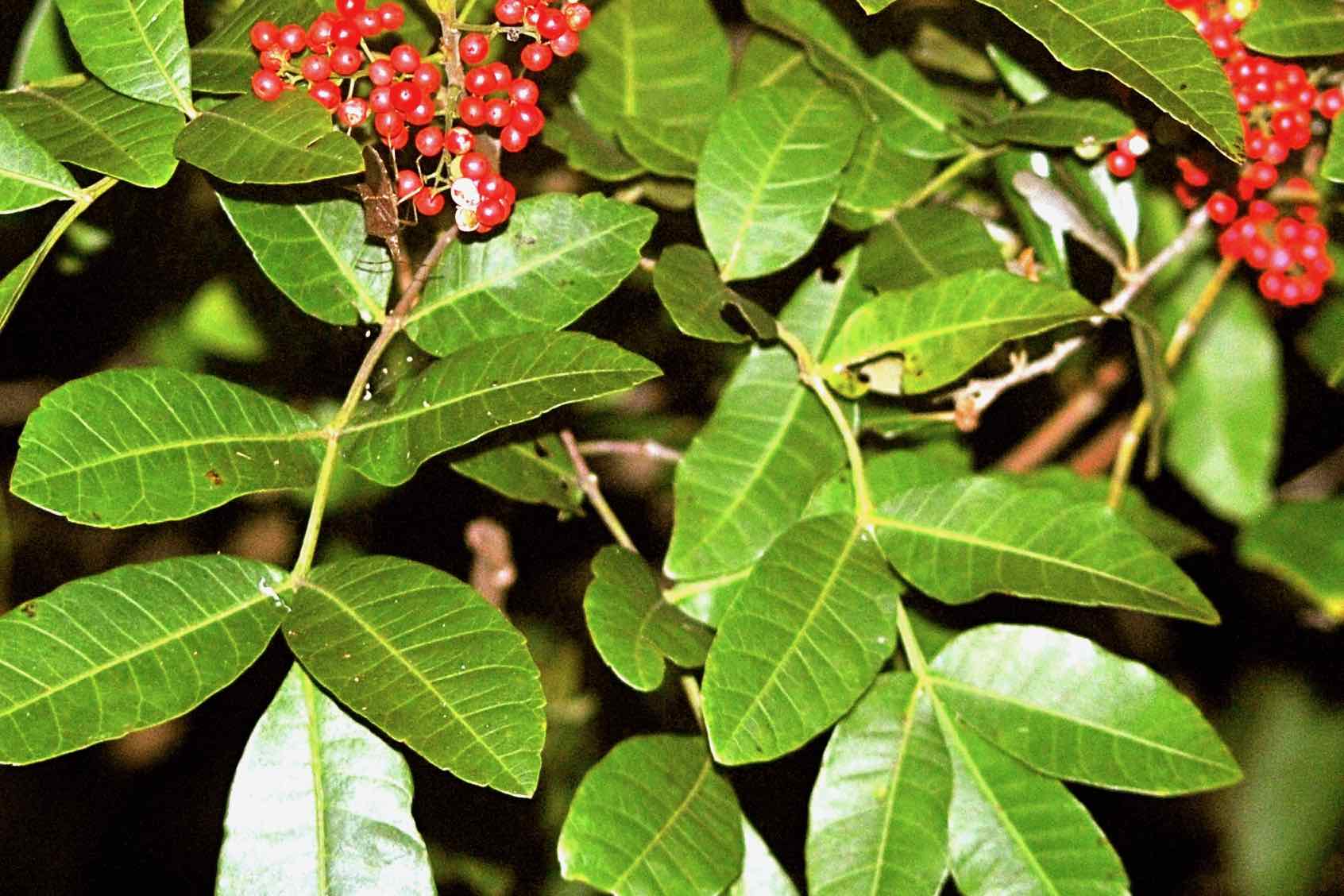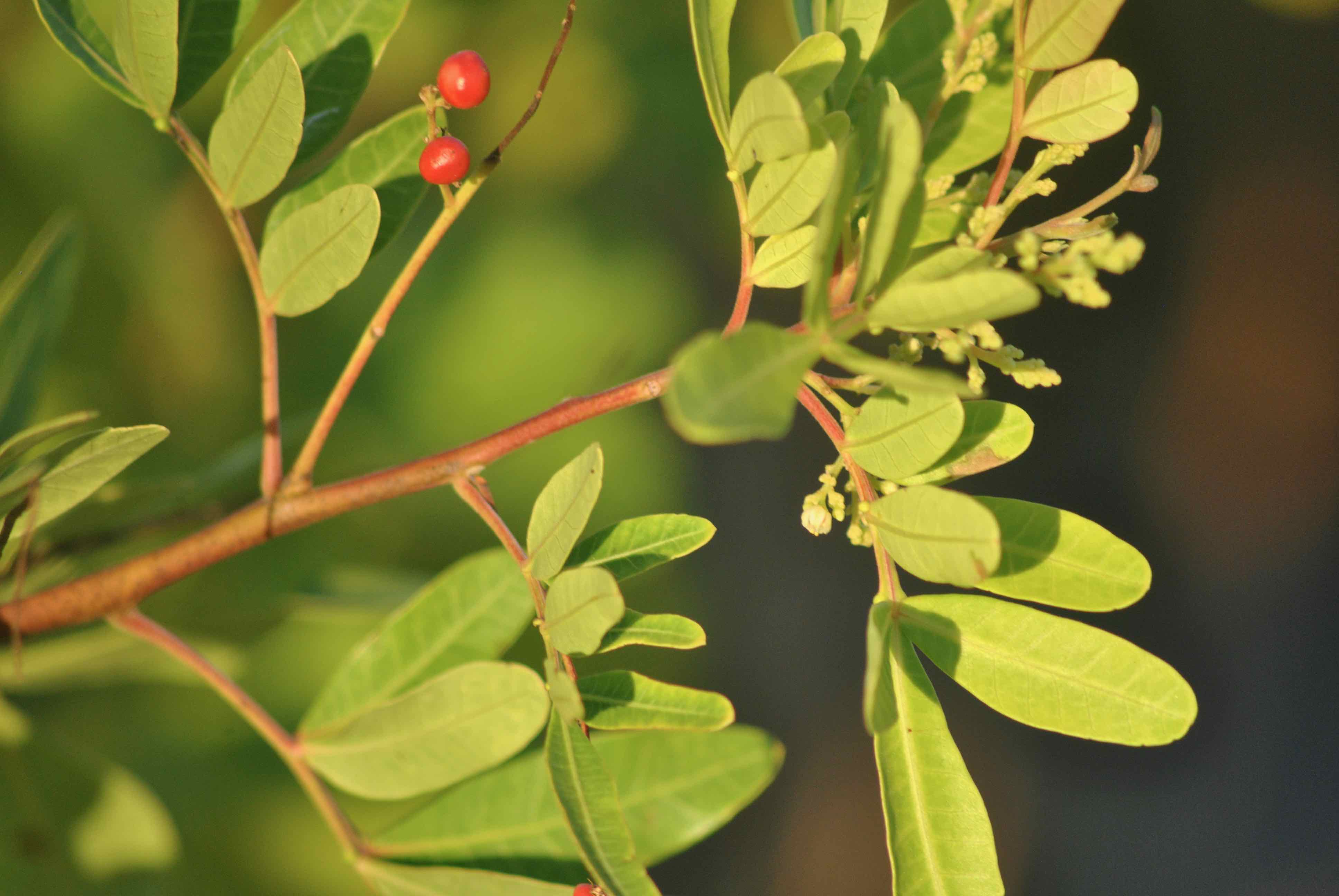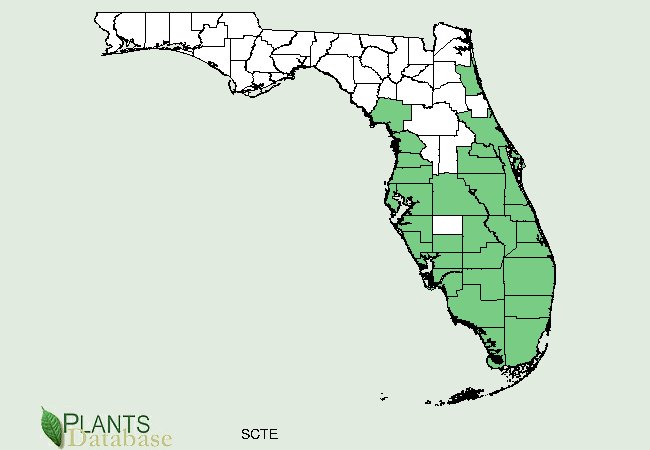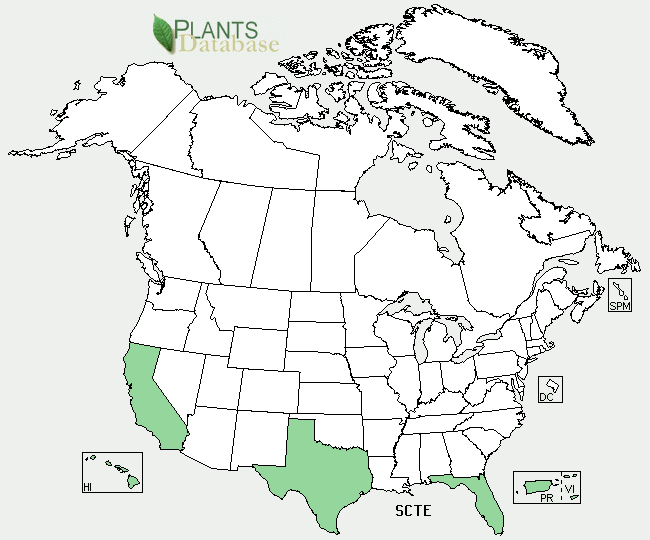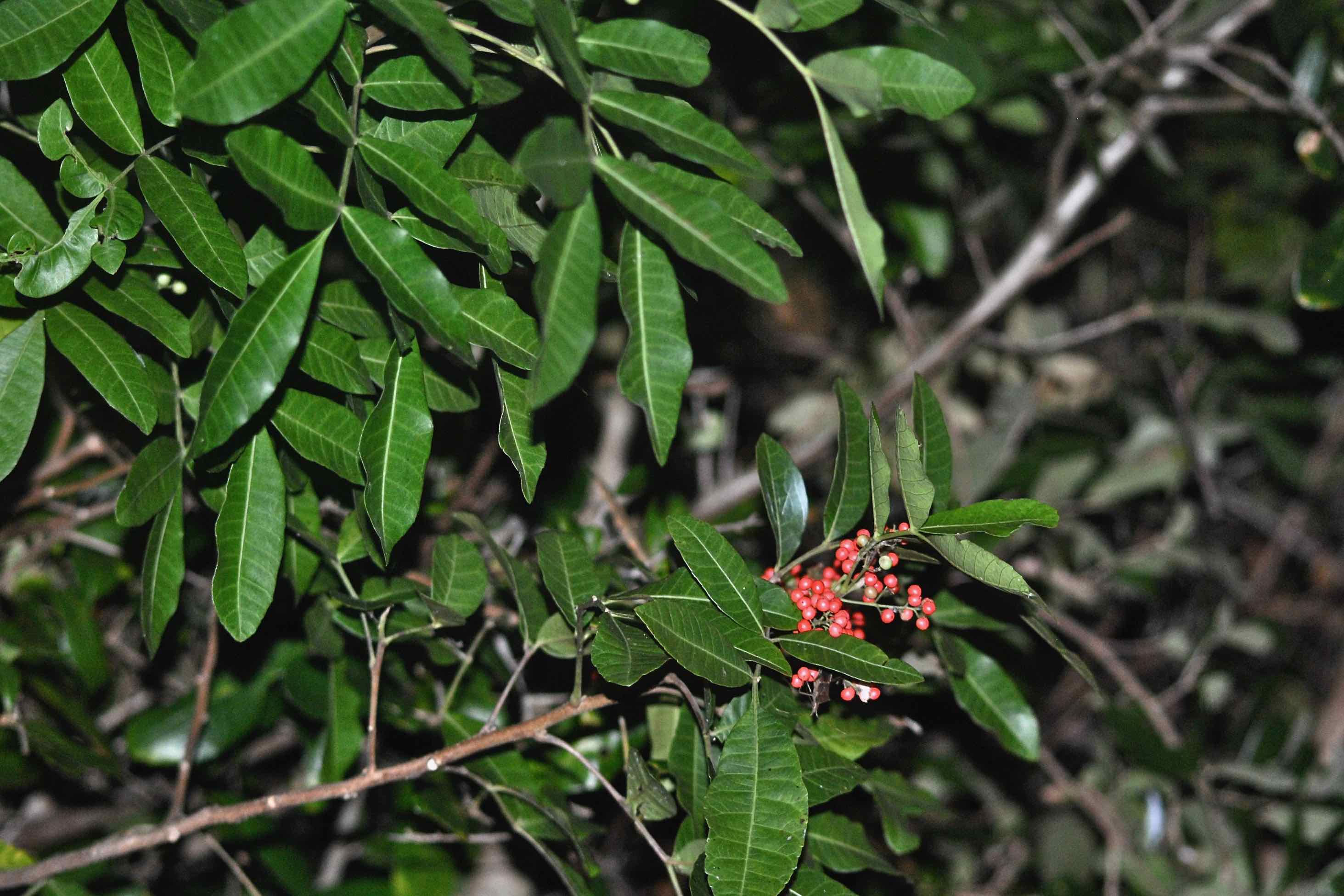
Brazilian pepper, photographed at Blazing Star Environmental Preserve, Boca Raton, Palm Beach County, in October 2013.
Before the Burmese python slithered its way into the Everglades, this sprawling tree, the Brazilian pepper, Schinus terebinthifolius, was environmental public enemy No. 1 in Florida.
It's one of the few invasives where the source and ground zero of the infestation are clearly known. Brazilian pepper is a native of Brazil, as you might guess, Paraguay and Argentina. In the 1890s, the plant was imported into Florida as an ornamental. As the story is told by the U.S. Department of Agriculture, a certain Dr. George Stone in 1926 began growing Brazilian pepper at his Punta Gorda home.
Stone was so taken by its beauty, he began giving away seedlings by the hundreds; Brazilian pepper began showing up along city streets. By the 1950s, scientists noticed that the tree was beginning to dominate parts of the state. By 1969, it became evident that Brazilian pepper had the potential to devastate the Everglades.
Even today, its potential to wreak havoc on vulnerable habitats cannot be overstated. According to the USDA, Brazilian pepper is "ranked among the most important threats to biodiversity in the South Florida ecosystem." Brazilian pepper "occupies more space in the state than every other invasive species."
It is estimated that Brazilian pepper covers 700,000 acres of Florida real estate. The plant can form massive stands that crowd out native plants, in turn depriving native animals of food. It is believed to put chemicals into the soil that inhibit other plants from growing nearby.
Cut it down and it will regrow from the roots. A single tree can produce seeds by the hundreds of thousands. It puts out berries in fall and winter when there is little else fruiting, making it attractive to wildlife. The fruit, however, can have a deadly "paralyzing" effect on birds and other animals.
Brazilian pepper typically grows between 10 and 43 feet fall, with multiple stems, usually with a diameter of about 4 inches, though trunks as thick as 3 feet have been reported. On young trees and branches, the bark is smooth, turning furrowed and scaly as they age. The leaves are compound, with between 3 and 15 leaflets — typically 7 — arranged alternately on the stem. The leaflets come in pairs, with a single terminal leaflet, a key identifier of the species. It is a rapid grower, reaching maturity in three years.
Birds, particularly robins, are major dispersers of Brazilian pepper seeds. But mammals play an important role, too, since when they defecate the seeds, they're also providing them with a rich "package" of fertilzer in the form of poop.
The sap contains urushiol, which puts the poison in poison ivy and poisonwood. That adds to the degree of difficulty in removing the tree. The leaves are toxic to humans, to cattle and to horses. One interesting method of controlling Brazilian pepper involves employing a Florida native plant, love vine, a parasite. Love vine infects the trees and robs them of nutrients. It doesn't kill Brazilian pepper, but it does reduce its vitality.
On the positive side of the ledger, the fruit is used to make pink peppercorns (a related species, Paraguayan pepper, is also used). It also may have medicinal properties.
Other names: Brazilian peppertree, Christmas berry, Florida holly — and odd name since Florida has several native hollies — and broad-leaf holly.
It is a member of Ancardiaceae, the sumac family, of which poison ivy and poisonwood are both members.
Blazing Star Environmental Preserve
Click on photo for larger image
U.S. Department of Agriculture Distribution Maps


